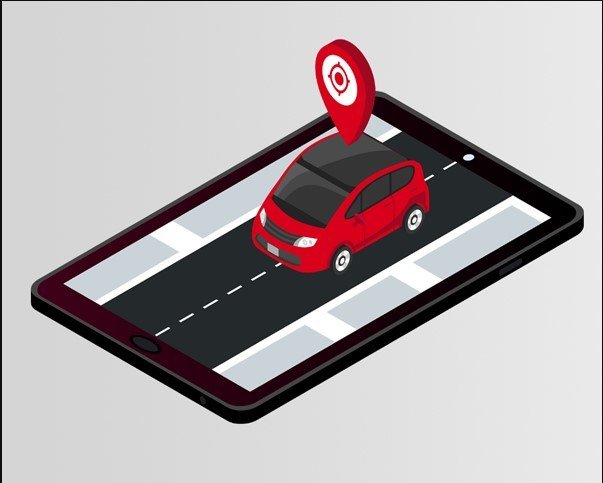Installing and configuring a vehicle-car tracker
Installing and configuring a vehicle tracker can be a great way to enhance the security and monitoring of your vehicle. Below is a step-by-step guide to help you through the process:
1. Choose the Right Tracker
- Type of Tracker: Decide between an OBD-II tracker (plugs into your car’s OBD-II port) or a hardwired tracker (wired directly into the vehicle’s electrical system).
- Features: Consider features like real-time tracking, geo-fencing, speed alerts, historical data, and battery life.
2. Purchase a SIM Card (If Required)
- Some trackers require a SIM card for cellular connectivity. Ensure it’s compatible with the tracker and has an appropriate data plan.
3. Installation Process
- For OBD-II Trackers:
- Locate your vehicle’s OBD-II port (usually under the dashboard).
- Plug the tracker into the port.
- The device should power up automatically.
- For Hardwired Trackers:
- Tools Required: Wire strippers, crimp connectors, electrical tape, multimeter, and zip ties.
- Locate a Power Source: Identify a constant power source (usually the vehicle’s fuse box) and a ground connection.
- Connect Wires:
- Red Wire: Connect to a constant power source.
- Black Wire: Connect to the vehicle’s ground.
- Optional Wires: Some trackers have additional wires for ignition detection, external antennas, etc.
- Mount the Tracker: Secure the tracker in a hidden location, ensuring it’s not blocked by metal for proper GPS signal reception.
- Test the Installation: Power on the vehicle and check if the tracker is receiving power and transmitting data.
4. Configure the Tracker
- Install the Mobile App: Download the manufacturer’s app on your smartphone.
- Create an Account: Sign up and log in.
- Add the Device: Enter the tracker’s unique ID or IMEI number as instructed by the app.
- Set Preferences: Configure alerts (e.g., speeding, entering/exiting a geo-fence), tracking intervals, and other settings.
5. Testing the Tracker
- Drive the Vehicle: Take your vehicle for a test drive to ensure the tracker is functioning correctly.
- Check Real-Time Location: Verify that the tracker updates your vehicle’s location accurately in the app.
- Review Alerts: Test any alerts or notifications you have set up.
6. Maintenance and Troubleshooting
- Check the Battery: If using a battery-operated tracker, monitor the battery life and charge as necessary.
- Firmware Updates: Keep the tracker’s firmware updated via the app.
- Troubleshooting: If the tracker isn’t working, check power connections, SIM card functionality (if applicable), and ensure the app is configured correctly.
7. Legal Considerations
- Ensure that the use of a tracker complies with local laws, especially if tracking a vehicle that is not yours.
If you need specific guidance based on the model of your tracker, feel free to ask!
Certainly! Here’s a more detailed breakdown of the installation and configuration process for a vehicle tracker:
1. Selecting the Right Vehicle Tracker
- Hardwired Trackers: Ideal for long-term tracking without worrying about battery life. Suitable for fleet management and high-security needs.
- OBD-II Trackers: Easy to install and ideal for personal vehicles. They typically provide engine diagnostics along with tracking.
- Battery-Powered Trackers: Portable and can be easily moved between vehicles. Ideal for temporary tracking.
2. Pre-Installation Preparations
- Read the Manual: Before starting, thoroughly read the tracker’s user manual. Different models may have specific installation requirements.
- Check for Necessary Tools: Depending on the tracker, you might need a screwdriver, wire strippers, a multimeter, zip ties, and a fuse tap for installation.
3. Choosing the Installation Location
- For Hardwired Trackers:
- Concealed Location: Choose a hidden spot within the vehicle where the tracker won’t be easily discovered, such as under the dashboard, behind the glove box, or inside the trunk.
- Signal Reception: Ensure the chosen spot does not block the GPS signal. Avoid areas surrounded by metal.
- For Battery-Powered Trackers:
- Portable Mounting: You can place these in the glove compartment, under the seats, or in the trunk. Ensure the device is securely mounted to avoid movement.
- For OBD-II Trackers:
- Simple Plug-In: Plug the tracker directly into the OBD-II port under the dashboard. If you want to conceal it, you can use an OBD-II extension cable to hide the tracker.
4. Wiring the Tracker (For Hardwired Trackers)
- Identify Power Sources:
- Constant Power: Use a multimeter to locate a constant 12V power source in the fuse box.
- Ignition Power (Optional): For trackers that monitor ignition status, find a fuse that is live only when the ignition is on.
- Connect the Wires:
- Power (Red Wire): Connect to the identified constant power source using a fuse tap or by splicing into the wire.
- Ground (Black Wire): Connect to a solid metal surface using a ring terminal or by splicing into an existing ground wire.
- Ignition (Optional, Yellow Wire): Connect to an ignition-controlled power source if the tracker supports this feature.
- Accessory Wires: Some trackers have additional wires for features like remote immobilization or external antennas. Follow the manual for specific instructions.
- Secure the Wiring: Use zip ties to neatly secure the wires and prevent them from interfering with vehicle components.
5. SIM Card Installation (If Required)
- Insert the SIM Card: Ensure the SIM card is activated and has a data plan. Insert it into the tracker as per the instructions.
- Check Network Connectivity: After powering up, ensure the tracker can connect to the cellular network. This may involve checking status LEDs or using the app to confirm connection.
6. Software Setup
- Download the App: Install the manufacturer’s app on your smartphone or access their web platform.
- Register the Tracker: Enter the device’s unique ID, often found on a label on the tracker, to register it with your account.
- Set Up Tracking Preferences:
- Real-Time Tracking: Adjust the frequency of location updates. More frequent updates may consume more battery or data.
- Geo-Fencing: Set up virtual boundaries on the map. You’ll receive alerts if the vehicle enters or exits these zones.
- Speed Alerts: Configure alerts for when the vehicle exceeds a certain speed limit.
- Movement Alerts: Get notified if the vehicle starts moving unexpectedly (useful for theft prevention).
7. Testing the Tracker
- Initial Test Drive: After installation, take the vehicle for a test drive. Monitor the tracker’s real-time location via the app to ensure it’s working properly.
- Alert Testing: Test any alerts you’ve set up, such as geo-fencing or speed alerts, to confirm they trigger as expected.
- Signal Strength: Check the GPS and cellular signal strength in different areas to ensure reliable coverage.
8. Advanced Features
- Historical Data: Access historical routes and activity logs to review past movements of the vehicle.
- Remote Immobilization: Some trackers allow you to disable the vehicle remotely in case of theft. This feature is often controlled through the app.
- Driver Behavior Monitoring: Some trackers can monitor driver behavior, including harsh braking, rapid acceleration, and cornering, which is useful for fleet management.
9. Maintenance and Troubleshooting
- Regular Checks: Periodically check the tracker’s status via the app to ensure it’s functioning correctly.
- Firmware Updates: Manufacturers may release updates to improve performance or add features. Ensure your tracker’s firmware is up to date.
- Battery Maintenance: For battery-powered trackers, keep an eye on battery levels and recharge or replace batteries as needed.
- Troubleshooting: If the tracker is not working:
- Check Power: Ensure all connections are secure and the tracker is receiving power.
- Network Issues: Verify that the SIM card is active and has sufficient data.
- Signal Blockage: Ensure the tracker is not obstructed by metal or other signal-blocking materials.
10. Legal and Ethical Considerations
- Privacy Laws: Be aware of local laws regarding vehicle tracking, especially if the vehicle is not owned by you. Unauthorized tracking can have legal consequences.
- Driver Consent: If you’re tracking a vehicle driven by someone else (e.g., an employee or family member), ensure they are aware of the tracking and have given consent.
This guide should help you successfully install and configure your vehicle tracker. If you have any specific questions about your device or encounter any issues during installation, feel free to ask!


